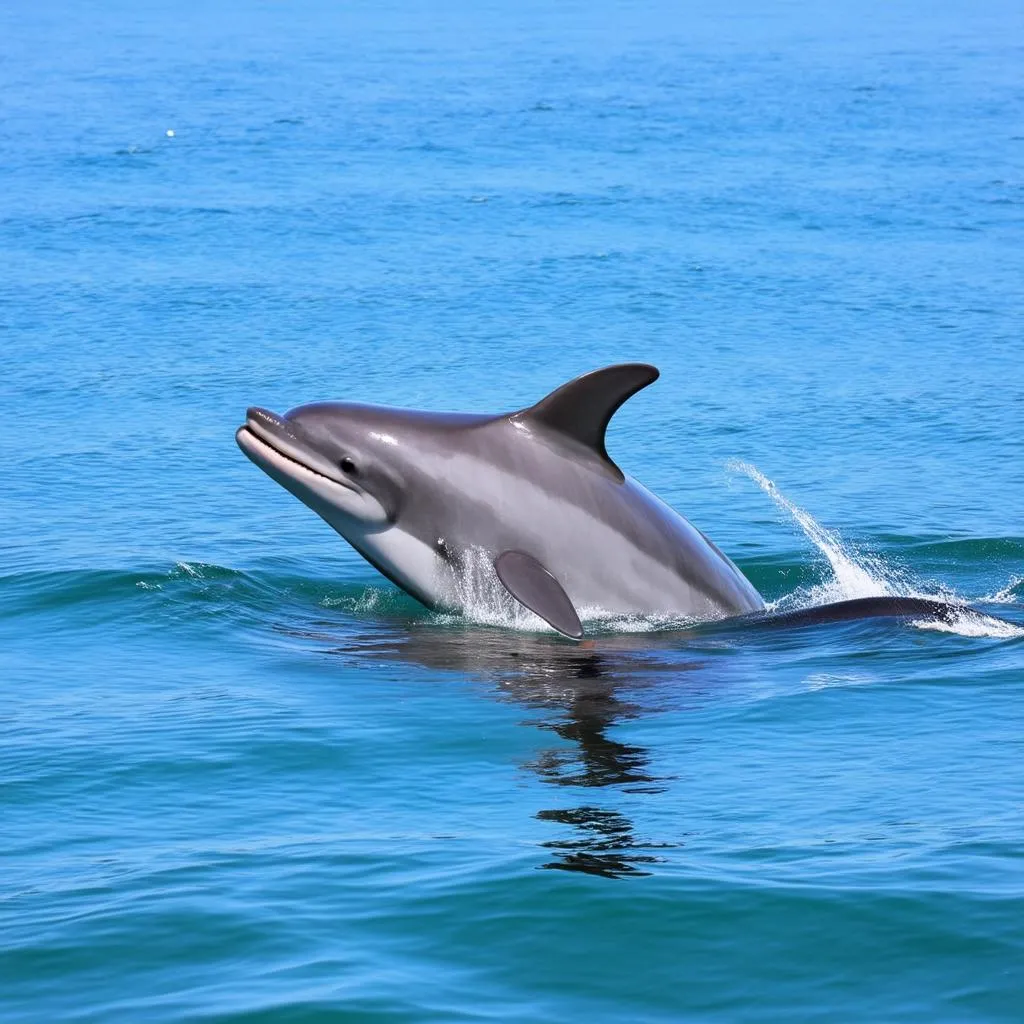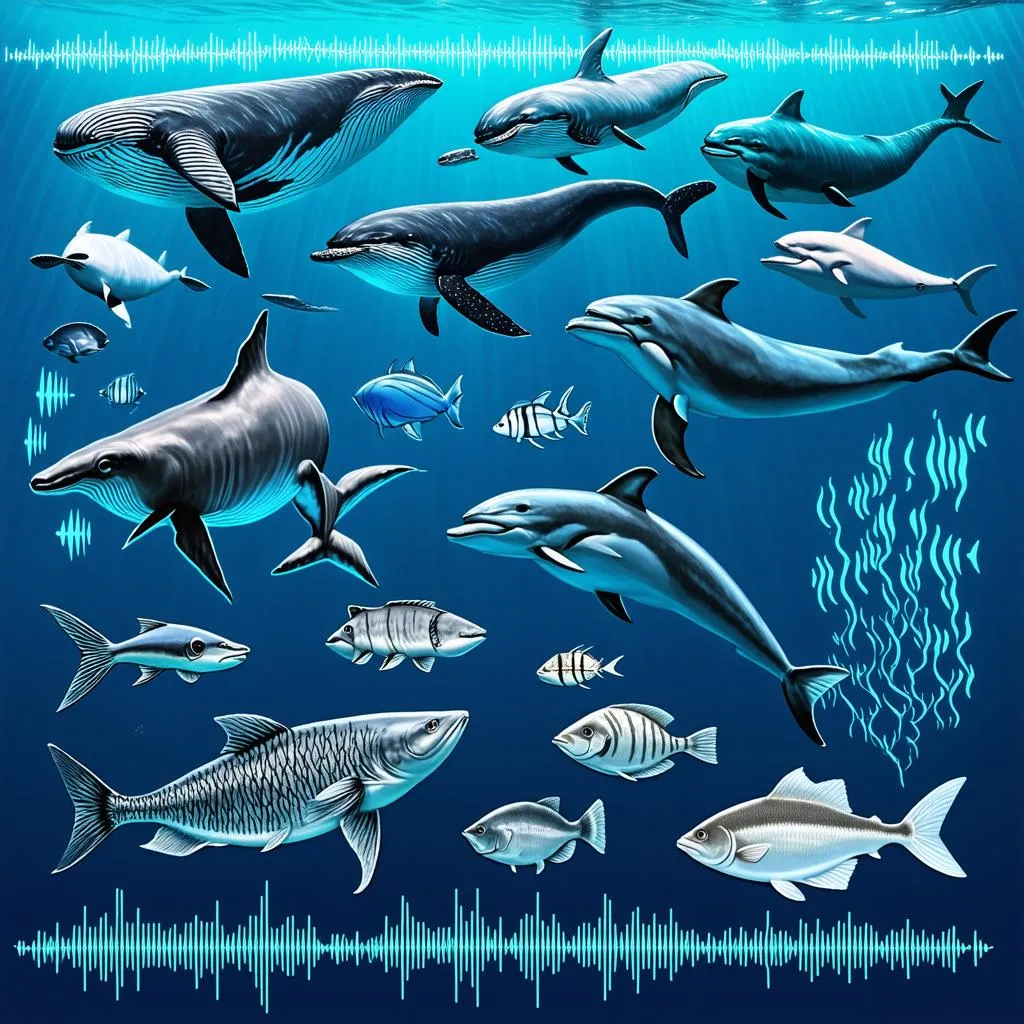Have you ever been swimming and wondered how whales communicate over such vast distances? Or how dolphins use echolocation to navigate the murky depths? It all comes down to the fascinating way sound travels underwater. Let’s take a deep dive into the science of sound beneath the waves!
The Science of Underwater Sound
Sound travels differently underwater than it does in air. This difference boils down to a key factor: density. Water is much denser than air, meaning the molecules are packed closer together.
How Sound Waves Travel
When something vibrates, whether it’s a whale’s vocal cords or a boat’s engine, it creates sound waves. These waves are actually areas of high and low pressure that travel outward from the source.
In air: Sound waves cause air molecules to bump into each other, transferring energy as they go. Think of it like a domino effect!
In water: The closely packed water molecules transmit sound waves much faster and further. That’s why sound can travel incredibly long distances underwater.
Speed of Sound Underwater
The speed of sound in air is about 343 meters per second. However, in water, sound travels approximately four times faster, at around 1,500 meters per second. This speed can vary slightly depending on factors like water temperature, salinity, and pressure.
Imagine snorkeling in the crystal-clear waters of the Great Barrier Reef. The sounds of colorful fish darting around you would reach your ears much quicker than if you were listening to birdsong in a forest!
 Underwater Sound Waves
Underwater Sound Waves
How Marine Animals Use Sound
The ocean is a bustling metropolis of sound! Marine animals have adapted to use sound for a variety of purposes, including:
Communication:
Whales are famous for their haunting songs, which can travel for hundreds of miles underwater. Dolphins use clicks, whistles, and squeaks to communicate with each other and hunt for prey.
Echolocation:
Dolphins, bats, and some whales use echolocation to “see” in dark or murky waters. They emit sound waves that bounce off objects and return to them. The time it takes for the echoes to return helps them determine the object’s size, shape, and distance.
Navigation:
Many marine animals use sound to navigate through the vast ocean. By listening to the sounds of waves crashing on reefs or the calls of other animals, they can orient themselves and find their way.
 Dolphin Echolocation
Dolphin Echolocation
The Impact of Noise Pollution
Human activities are increasingly adding noise to the ocean. Ship traffic, sonar, and underwater construction all contribute to noise pollution. This noise can interfere with marine animals’ ability to communicate, navigate, and find food. It can even cause physical harm in some cases.
Protecting Our Oceans
Understanding how sound travels underwater highlights the importance of protecting our marine environments from noise pollution. By reducing our impact, we can help ensure a healthy and vibrant ocean for generations to come.
FAQs About Sound Underwater
1. Does sound travel faster in saltwater or freshwater?
Sound travels slightly faster in saltwater because it is denser than freshwater.
2. Why can’t we hear underwater as well as we can in air?
Our ears are designed to work in air. When we’re underwater, the water pressure and the different way sound travels make it harder for our ears to perceive sound waves.
3. What is the loudest sound ever recorded underwater?
The loudest sound ever recorded underwater was the Krakatoa volcanic eruption in 1883, which was heard thousands of miles away!
4. Do fish have ears?
Fish don’t have external ears, but they have internal ears that detect vibrations in the water.
5. How can I learn more about marine life and sound?
Visit travelcar.edu.vn for fascinating articles on various travel topics, including marine life and the wonders of the underwater world!
Conclusion
The study of sound underwater offers a captivating glimpse into a world hidden beneath the surface. From the intricate communication systems of whales to the challenges of noise pollution, understanding how sound travels in this environment is crucial for appreciating and protecting our oceans. So, the next time you’re by the sea, take a moment to listen and imagine the symphony of sounds playing out beneath the waves.
 Ocean Soundscape
Ocean Soundscape
Did you find this article helpful? Share it with your fellow ocean enthusiasts and let us know your thoughts in the comments below! For more captivating travel insights and tips, explore the wealth of information on TRAVELCAR.edu.vn.

